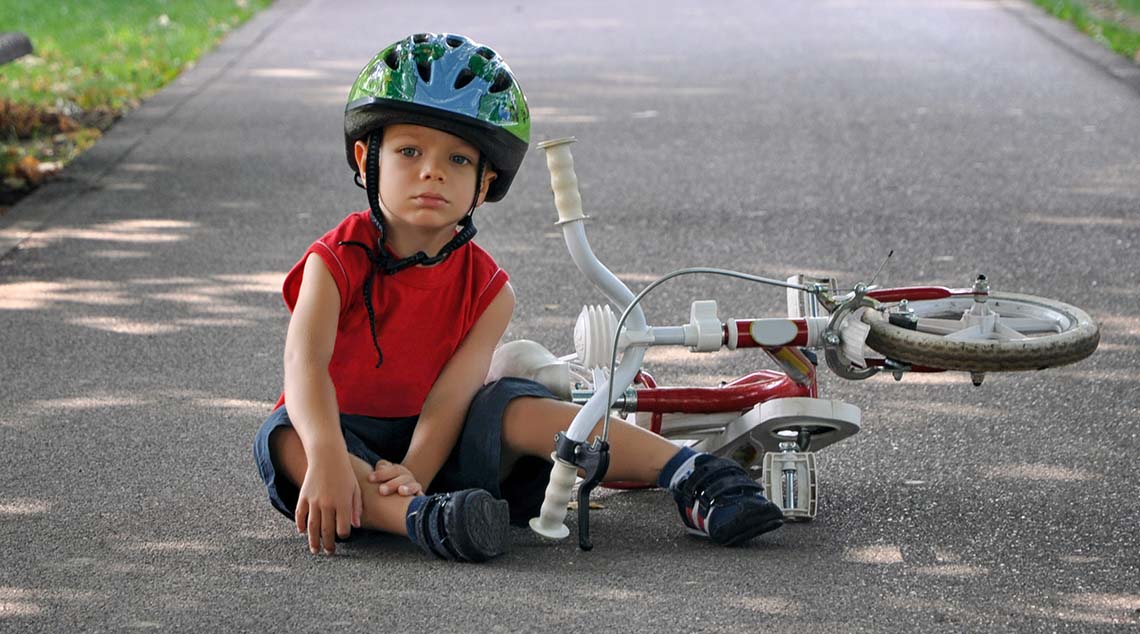5 wound-care myths, busted
Most of us cut, scratch and scrape ourselves at some point. But how many of us know the correct way to treat a wound so it has the best chance of healing well and fast?.
Managing scrapes and tumbles is part of the package when you’re raising kids or living an active lifestyle, so it’s important to know how to properly care for wounds when they happen.
But many of us may need to reassess the advice we grew up with so that we help, rather than hinder, the healing process.
Here are five myths about wound care – and what you should do instead.
Myth #1: Let a wound breathe to speed up healing
The reality is that wounds exposed to the air are less likely to heal1.
Wounds heal better in a moist environment2, so it’s important to cover them with a sterile dressing for optimal healing.
Myth 2: It’s fine to pick away the scab
As tempting as it may be to pull off your scab, you will only disturb the healing process3.
For the same reason that dressings should not be changed too often, a wound needs to be left alone to heal.
Myth #3: Minor wounds don’t require treatment
Minor wounds still require proper management with standard first aid procedures to avoid various complications.
At the very least, you need to wash your hands and rinse the area with clean water.
You should cover every wound with a dressing to help keep the wound clean and protect the area from bacteria and knocks during the healing process4.
Myth #4: Bacteria always grows under a dressing
Covering a wound with a sterile dressing is a good way to help protect it from germs, dirt and further injury5.
Myth #5: Seawater is good for wounds
The ocean is not a sterile environment, especially if the water is warm.
Swimming in the seawater with an open wound can delay healing6.
It’s important to opt for proper wound care.
So, what should you look for in a dressing?
It’s important to choose the right dressing.
Smith & Nephew’s OPSITE Post-Op dressing is a comfortable, waterproof, bacteria-proof dressing that can last up to seven days as long as it still protects the wound and is sticking well.
Lasting longer means fewer dressing changes, which helps the wound healing process.
Plasters and dressings that fall off or need to be changed daily mean the wound is constantly disturbed and this can lead to slower healing, more waste and less value. Because OPSITE Post-Op can last up to seven days, the wound can remain protected and continue to heal.
The dressing uses REACTIC film technology, which manages the wound’s moisture levels.
It allows excess moisture to evaporate and this may help minimise the risk of skin maceration, which can occur when a wound is exposed to moisture for a long time.
The top film acts as a bacterial and viral barrier to protect the site from external contamination.
OPSITE Post-Op dressing is easy to apply and remove, moves comfortably with your body and can be used to dress a wide variety of light-to-moderately exuding wounds, including cuts, grazes and stitches.
*This post is brought to you by Smith & Nephew. Always read the label and follow the directions for use.
1 Better Health Channel, Wounds – how to care for them, retrieved February 2024 from https://www.betterhealth.vic.gov.au/health/conditionsandtreatments/wounds-how-to-care-for-them#barriers-to-wound-healing
2 Junker et al, 2013, Clinical Impact Upon Wound Healing and Inflammation in Moist, Wet, and Dry Environments, Advances in Wound Care, 2(7): 348-356, retrieved February 2024 from https://www.ncbi.nlm.nih.gov/pmc/articles/PMC3842869
3 NIH National Library of Medicine, 2022, How wounds heal, MedlinePlus, retrieved March 2024 from https://medlineplus.gov/ency/patientinstructions/000741.htm
4 The Royal Children’s Hospital Melbourne, 2020, Cuts, grazes and lacerations, retrieved February 2024 from https://www.rch.org.au/kidsinfo/fact_sheets/Cuts_grazes_lacerations/
5 Cleveland Clinic, 2021, Should You Bandage a Cut or Sore or Let It Air Out?, retrieved February 2024 from https://health.clevelandclinic.org/cover-wound-air
6 Quinn et al, 2021, Seawater exposure to surgical wounds: an alarming patient perspective, Wound Practice and Research 2022; 30(3): 139-142, retrieved February 2024 from https://journals.cambridgemedia.com.au/application/files/1116/6389/9972/quinn.pdf





